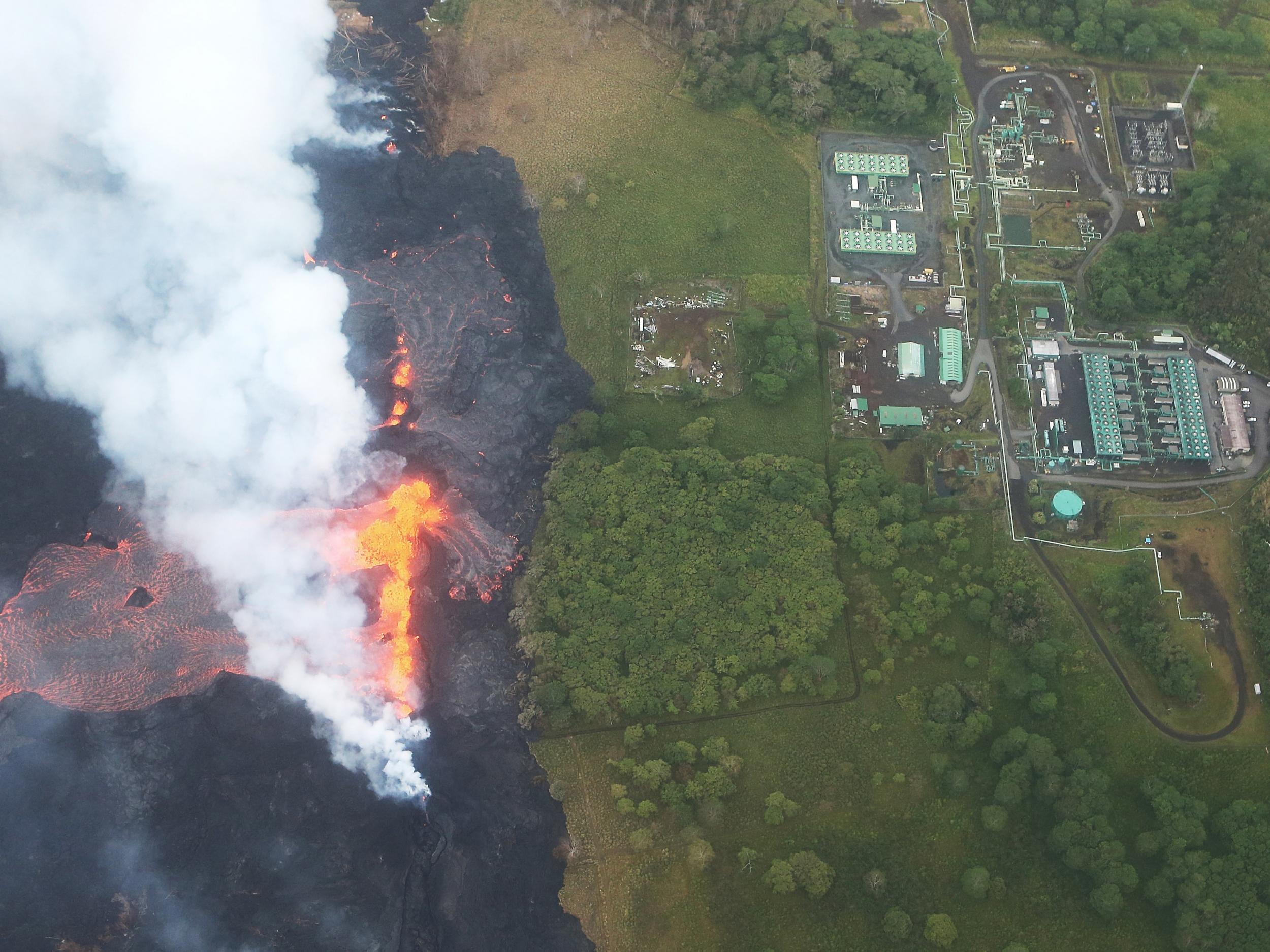Hawaii volcano latest: Molten lava flows onto power plant site amid fears over deadly gases
Workers race to shut down facilities as molten rock destroys warehouse
Molten lava from Hawaii’s erupting Kilauea volcano crept onto the site of geothermal power plant as workers raced to shut down facilities, amid fears that deadly gases could be released.
Crews worked to cap underground wells at the plant, which provides a quarter of Big Island’s power, as the molten rock destroyed a warehouse a few hundred metres away.
Earlier this month, about 60,000 gallons of highly flammable chemicals were moved away from the plant after the volcano began to erupt.
Since then workers have pumped cold water into the wells, which run up to a mile deep. They were also capped with iron plugs in an attempt to stop the lava getting in.
If lava enters the wells at the Puna Geothermal Venture plant, it could trigger the uncontrollable release of noxious sulphates, officials have warned.
The race to prevent a breach continued after what geologists said was an unprecedented, simultaneous eruption at Kilauea's summit and from giant volcanic cracks or fissures 25 miles down its eastern flank.
Fountains of lava spewed from fissures near Kilauea’s lower east rife zone, as geologists warned the eruption had entered a more violent phase.
A lava flow from one of the fissures entered the 815-acre geothermal plant complex on Monday night and destroyed a warehouse, County of Hawaii government spokeswoman Janet Snyder said.
Another fissure reactivated and sent more lava flowing slowly in the direction of the plant, said County of Hawaii Civil Defence.

Ms Snyder said none of the plant's wells were in imminent danger, as the flow was barely moving and still several hundred metres from the plant.
The latest explosive eruption at the Kilauea summit sent a plume of ash over Big Island, the Hawaiian Volcano Observatory said.
"Communities downwind should be prepared for ashfall as long as this activity continues," it added.
About three miles to the east of the power plant, clouds of noxious fumes, steam and fine glass-like particles billowed into the sky as lava poured across a main road and into the ocean from two flows.
Laze – a term combining the words “lava” and “haze” – is formed when erupting lava reacts with seawater. It is potentially deadly if inhaled.
“If one were to be near the laze, because of the various acids, it would be corrosive to the eyes, the nose and respiratory tract, and the skin,” said Alvin Bronstein, from the Hawaii State Department of Health.
Another hazard is the potential for methane gas explosions as searing lava – which can reach more than 1,000C – nears pockets of rotting vegetation, igniting traces of the flammable gas given off by the decay.
“These are quite a big hazard in vegetative areas and the explosions can occur well away from the lava flow itself,” said Janet Babb, of the United States Geological Survey.
At least 44 homes have been destroyed in the Leilani Estates and Lanipuna Gardens area of the island’s Puna district, and a man was seriously injured on Saturday when a plate-sized chunk of molten shot out of a fissure and struck him on the leg.
Some 2,000 people have been evacuated from their homes due to lava flows and toxic sulphur dioxide gas, levels of which have tripled in the last two days, according to civil defence officials.
The Hawaii National Guard has warned of more mandatory evacuations if further roads are blocked.
Join our commenting forum
Join thought-provoking conversations, follow other Independent readers and see their replies
Comments
Bookmark popover
Removed from bookmarks